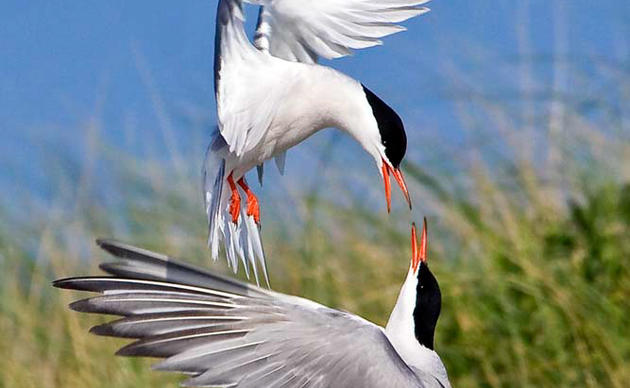Mallard
The male Mallard is the widely recognized “green-headed” duck and is a common sight in waterside parks. The more somber female, clad mostly in brown, still shares the male’s white tail. By 2080, Audubon's climate model projects a significant shift northward during the summer, with 75 percent loss in current summer range. The winter range appears stable, with a less than 10 percent change from the current range. Despite security during the winter, this popular game bird faces a dramatic and difficult adjustment during the summer, as the species largely departs the lower 48 by the end of the century.
 Each map is a visual guide to where a particular bird species may find the climate conditions it needs to survive in the future. We call this the bird's "climatic range."
Each map is a visual guide to where a particular bird species may find the climate conditions it needs to survive in the future. We call this the bird's "climatic range."
The colors indicate the season in which the bird may find suitable conditions-- blue for winter, yellow for summer (breeding), and green for where they overlap (indicating their presence year-round). The darker the shaded area, the more likely it is the bird species will find suitable climate conditions to survive there.
The outline of the approximate current range for each season remains fixed in each frame, allowing you to compare how the range will expand, contract, or shift in the future. The first frame of the animation shows where the bird can find a suitable climate today (based on data from 2000).
The next three frames predict where this bird's suitable climate may shift in the future--one frame each for 2020, 2050, and 2080.
Additional Resources
[doc:225516|link:Minnesota Breeding Bird Atlas Map - Mallard] PDF
How you can help, right now
Donate to Audubon
Help secure the future for birds at risk from climate change, habitat loss and other threats. Your support will power our science, education, advocacy and on-the-ground conservation efforts.
YOU can be a community scientist!
You can volunteer with Audubon Minnesota and help support birds.




